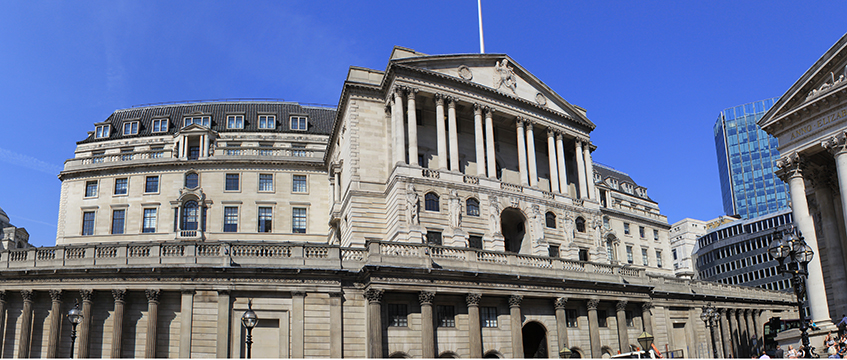The predicted post-EU referendum economic Armageddon didn’t happen. OK so sterling weakened and remains weak but that has its advantages. The resilience of the economy, it is fair to say, surprised, comforted and supported depending on which side of the in or out debate you sat.
Fast forward 12 months or so and the picture shows perhaps a little less resilience. The IMF revised its growth forecasts for the UK economy downwards from 2% to 1.7% for this year. Growth of 1.5% is predicted for next year.
Political uncertainty, questions over policy, and trade deals are playing their part in dampening growth expectations – much, but not all, hangs on the Brexit deal the UK strikes with the EU (see box). If you look at the UK’s economic performance historically, it has had rises and falls, and some might say in a cyclical market a cooling of growth is inevitable – it has been 10 years since the financial crash. But this isn’t a picture purely of doom and gloom, there are fundamentals at play which might work in the UK’s favour economically.
To begin, let’s cast an eye over the first six months of the year to see what has sparked the downgrade in growth forecasts.
Consumer spending is a key growth driver for the UK economy. In Q1 consumer spending contracted and in Q2 it grew, leaving us half way through the year back where we started at the beginning.
Wage inflation has been low, but consumer spending power has been protected by low inflation. “But now inflation has risen, partially because of the weaker pound and also partially because of other essentials going up in price so, for example, utility providers raising their prices,” says Nina Skero, head of macroeconomics, Centre for Economics and Business Research. “I think that is putting a lot of pressure on households, meaning they are not spending as much.”
PwC is predicting that inflation will continue to grow this year – it was up to 2.9% in August from 2.6% in July – but will potentially decline next year if wage growth remains weak. The rise in inflation puts the Bank of England in a tricky spot: Raise interest rates to stem inflation, but risk damaging consumer spending further – borrowing is on the rise.
There are other areas to look at, such as net trade. Skero says: “Imports are still rising quite strongly and exports haven’t had a great year thus far, so despite the weaker pound, despite the pick-up in global trade, despite a strong performance in the EU, which is the UK’s biggest export market, the trade hasn’t performed that well.”
What the UK has in its favour, perhaps, is the strength of its trading partners. Skero points to China the US and euro zone as all performing well, in fact the IMF has revised upwards its growth forecasts for Germany, France, Italy and Spain.
In its latest UK economy report PwC says continued growth in the US and EU – and a good Brexit deal – would bode well for UK growth.
While confidence has weakened, the PMI index was still above the 50 mark at 53.8, and marginally ahead of forecasts at the beginning of August. And at the start of September, unemployment figures dropped from 4.4% to 4.3% which is the lowest level since 1975, with Savills predicting that take-up of office space will be up 4% on last year in the UK regions.
So, it is a mixed picture that can be very crudely summed up thus: Weakened growth, but growth is still predicted – and all eyes are on the Brexit negotiations.
Regional variations
What are the prospects for the UK’s cities and regions? This depends on a variety of issues: existing economic drivers, skills and access to those skills.
Nina Skero, head of macroeconomics, Centre for Economics and Business Research says the highest level of growth is expected in the East of England (see graph): “In the east of England, which we expect to perform quite well, there are a lot of quite productive service clusters.
Longer term the strength of the UK’s cities and regions economic performance rests on two key things: skills and infrastructure. With UK unemployment at a record low, business investment will go where the skills are and where there is wide access to those skills – which means good infrastructure.
The UK government is investing in major projects such as the HS2 rail link which will improve train capacity and speed between London, Birmingham and the North. However, Paul Swinney, an economist at the Centre for Cities, says local transport is just as important.
“Certainly because Manchester has a growing economy and a strong city centre economy in particular, its tram network is working with that and should be bringing workers in, and that is definitely an advantage for it.”
The new body Transport for North could also prove a big advantage in co-ordinating local bus services in the same way Transport for London does for the capital.
Areas which are more dependent on migrant labour may face challenges following the UK’s withdrawal from the EU. Swinney points to the South East which is more dependent on migrant labour than elsewhere, but adds that the challenges that face the northern cities are not going to go away whether the UK is in or out of the EU.
To send feedback, e-mail stacey.meadwell@egi.co.uk or tweet @EGStaceyM or @estatesgazette











